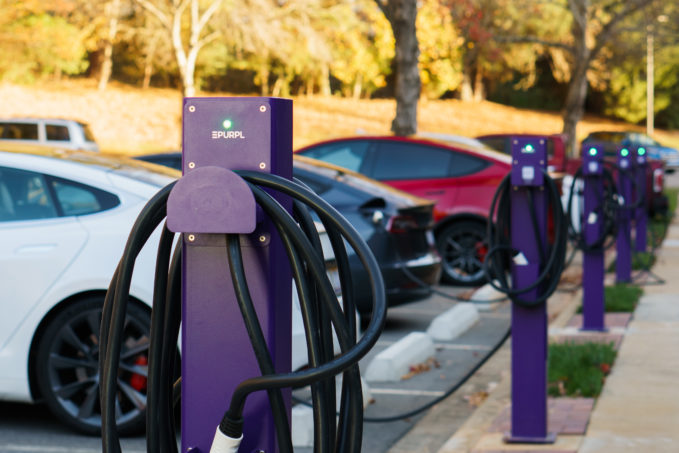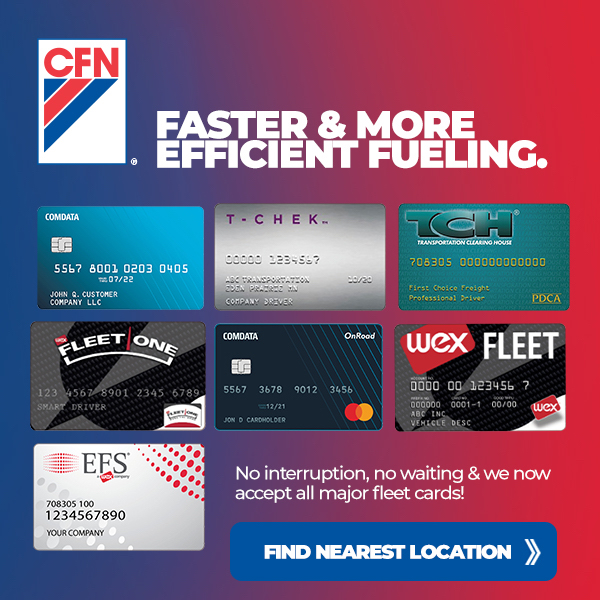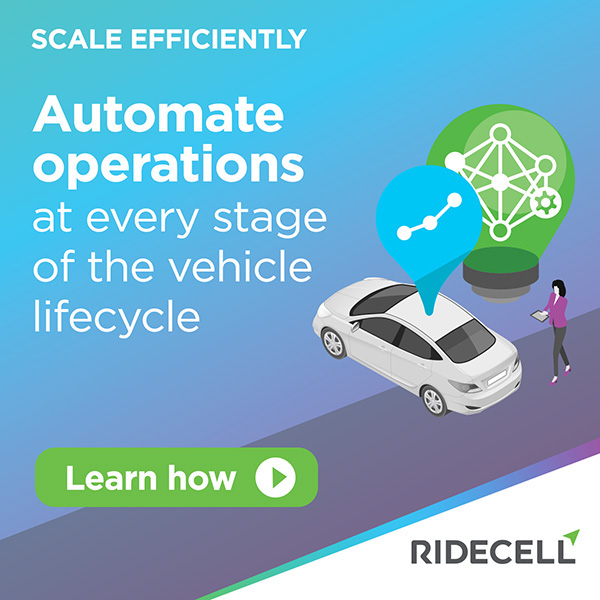
By Ed Pierce, Contributing Editor
March 14, 2022
 We interviewed Ryan Rizor, vice president of commercial and industrial sales at of Atom Power, a company that offers EV charging solutions for fleets.
We interviewed Ryan Rizor, vice president of commercial and industrial sales at of Atom Power, a company that offers EV charging solutions for fleets.
Atom Power works with fleet service providers to offer an overall solution of electric vehicles and infrastructure. Rizor talked to us about how the company is providing fleet managers with charging solutions where the power and intelligence is centralized in the facility, leaving the charging stations to require minimal electronics and cost. Here’s what we learned:
Tell us a bit about Atom Power and your role within the company.
Atom Power was a startup founded in 2014 by CEO Ryan Kennedy with the sole purpose of bringing safety to the circuit breaker industry. In 2019, Atom Power converted a mechanical switch to a digital small state circuit breaker, creating the world’s first solid state circuit breaker.
Rizor notes that an important part of a successful implementation is to act as the customer’s voice throughout the process. The Atom team engages with customers in order to understand their needs, pain points, and ideas about future market trends. Then the team takes those inputs and discusses them with Engineering and Sales to come up with a plan, market strategy, and product roadmap to implement customer input.
What type of customers are you reaching out to? What is the priority list from a market segmentation point of view?
Rizor states that while their market could encompass anything with a circuit breaker, they first narrowed their focus to electric vehicle charging stations. The specific areas he identifies are commercial, multi-family, residential, and EV fleets.
What are you doing in the area of fleets?
Rizor notes that because of its technology and position as an equipment manufacturer, Atom Power prefers to be behind the fence, focused on supplying circuit breakers to fleets, using an open API so third parties can integrate and take care of the rest. Because they’re digital, the circuit breakers can be throttled up and down from 6 amps to 80 amps. This allows them to service class two, three, four, and five vehicles.
Rizor states that in order to enable the total solution, Atom Power is looking at partnerships with the OEMs and fleet management companies. Because they’re going forward with just equipment and an open API, there’s room for many companies to integrate with them.
How does the National Electric Vehicle Infrastructure Formula Plan affect you and the fleet market?
According to Rizor, the plan is based on a formula used by the Federal Highway Administration on the state level. This means that the percentage of funding a state gets from the Federal Highway Administration is equal to the amount they’ll get for this project.
Of the $7.5 billion allocated by the plan, $5 billion will be given over the next five years, with $1 billion given out each year. It’s also broken up into categories, with money segmented towards different charging levels. Another portion is segmented towards the infrastructure costs associated with installing and activating charging stations.
What’s the timeline for these projects?
Rizor notes that states will have to start submitting their planning by August 1st, with approval starting by September 30th. This means these projects may not be implemented by the end of the year. However, a lot of work is being done in the interim as states begin rolling out initiatives and developing transition plans.
What are the benefits of your equipment? How does it compare to traditional charging?
Rizor explains that with traditional charging, everything is protected by a circuit breaker. The National Electric Code requires a circuit breaker to be upstream from the EV charging station. So, with Atom Power’s competitors, the charging station must contain all the smart technology: the networking, logic, and communication mechanisms. This means that the most expensive asset — costing between $2-10K — is out in the field where it is vulnerable to accidents, the elements, and other perils.
On the other hand, Atom Power permits a better location for its technology — in a circuit breaker panel kept safely inside the building in the electrical cabinet room. The only thing out in the field is a pole, pedestal, or wall box with a power cable connecting it to the indoor panel.
This means that charging stations are inexpensive to replace, dropping the costs from thousands of dollars per unit to a couple hundred. It also means that a company doesn’t have to deal with LTE signals from twenty different charging stations, which can result in high service fees.
By keeping the smarts in the panel, Atom creates a centralized charging solution that can feed off the building meter. The company also programs the charging profiles within the panel, which can be modified via software connection. Then, if the LTE signal goes down, the communication and charge level doesn’t drop. It also means that a company can install additional charging stations by simply plugging in another breaker. Lastly, it doesn’t have to worry about service contracts because any electrician can fix the unit.
Will the fleet manager work with facilities or building maintenance to complete the transition? Or can they rely on your partners, the OEMs or telemetrics providers?
Rizor says that all are true depending on the application. When companies approach Atom Power about transitioning their fleets, Atom Power asks them about their goals. Companies need to have data about factors like vehicle sizes, routes, and battery capacities in order to help Atom Power determine the number and type of charging stations needed to accommodate the fleet. Atom Power can then work with contractors to optimize the timeline and minimize the cost of infrastructure.




